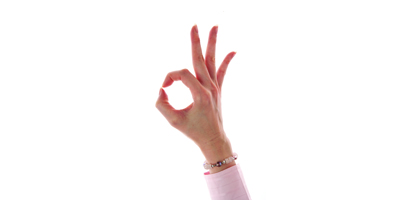Sigrid Fletcher wrote, “I know OK has been around forever. Is it still considered slang? Also, does slang ever become real English?”
O.K., OK, Okay, meaning “all right,” entered American English as political slang in the 1800s. In 1839, The New York Evening Standard, in commenting on “initial language,” wrote that OK was “getting into very general use.” This article implied that OK was widely used in speech.
The “initial language” mentioned was, “a species of spoken short-hand using initials rather than words.” As well as OK, the article dealt with PDQ (pretty damn quick) and GT (gone to Texas). The Standard of 1839 would likely be aghast at the proliferation of initials in today’s English.
OK, now acceptable in informal speech and writing, is not yet viewed as Standard English. Therefore, it shouldn’t appear in such formal documents as deeds, legislative papers, legal correspondence, etc.
Still, it has made progress toward standardization. Recent dictionaries classify OK as “informal” rather than “slang.” By 1971, American Heritage Dictionary already viewed OK as informal, although Chambers Twentieth Century (1972) classified it as slang. Both Oxford Canadian (1998) and Nelson’s (1997) call OK informal. Collins Gage (2006) also views OK as informal.
Oxford defines slang as an ever-changing set of colloquialisms generally considered distinct from and socially lower than the standard vocabulary.
Colloquial (informal) English is conversational English — everyday speech.
If OK is more than 176 years old and still not Standard English, we must agree with Kingsley Amis (1922-1995), English novelist, poet, critic and teacher, who commented on words that persist even when not standardized. “Once a word is not only current but accepted (by ordinary people) no power on earth can throw it out.”
That’s the answer. People like OK. They’re comfortable using it. It works. However, as Cambridge stresses, ever since dictionaries, grammars, spellers, and pronunciation guides first surfaced in the 18th century, they’ve focused on Standard English.
In slang’s case, editors of the above-named sources know that much slang is of the here-today-and-gone-tomorrow variety. For example, who today uses the once popular expressions, “cat’s pyjamas” (1920s), “zoot-suiter” (1940s), “do a bunk” (late 1800s) or “eager beavers” (1940s)? In fact, how many readers remember these expressions or know their meanings?
Some slang does eventually enter Standard English, but only after long years of usage. Bogus, clever, snob, mob, fun and rogue, all began life as slang, or as what Johnson termed, “low words” in his 1756 Dictionary of the English Language.
Clever meant, “nimble; dextrous,” when it first entered Middle English. It gained its current meaning in 1716, some 250 years later. Bogus (phoney; counterfeit) entered American slang in 1832 and wasn’t standardized until the 1930s.
If OK follows a similar path, it will finally get standardized about 2089.
Slang is hard to date. Since it originates within specific groups — teenagers, criminals, specialized workers or classes — it takes time to end up in print and we do depend on printed sources for dating all usage.
So, Sigrid, some slang does get the OK and become “real” English, but OK isn’t yet officially there.



